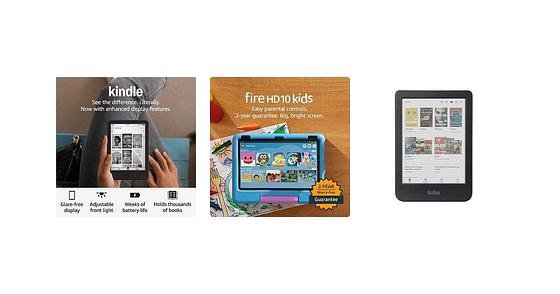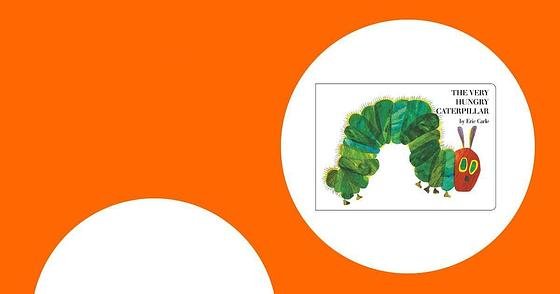
3 Must-Have Children's E-Readers for Back-to-School 2025
Find the top 3 children's e-readers for back-to-school 2025, featuring engaging content, parental controls, and durability for young readers.


Published: August 30, 2025
You want a simple, dependable way to help a young child build the foundation for writing. My First Learn-to-Write Workbook focuses on core skills—pen control, line tracing, and letter formation—presented in a clear progression that matches early motor development.
Using this workbook can strengthen your child’s fine motor skills, boost their confidence with independent practice, and make the transition to preschool or kindergarten smoother. The layout and variety of activities mean you can use it for short daily practice sessions or as part of a structured learning routine.
Feature |
Verdict |
|---|---|
Ease of Use |
⭐️⭐️⭐️⭐️⭐️ – You’ll find the pages intuitive and easy to follow ⏱️ |
Content & Progression |
⭐️⭐️⭐️⭐️ – Clear step-by-step progression from pen control to letters 🔍 |
Engagement |
⭐️⭐️⭐️⭐️ – Varied activities and bright printing keep children interested 🎨 |
Material Quality |
⭐️⭐️⭐️⭐️ – Thick pages resist bleed-through and hold up to repeated tracing ✍️ |
Overall Verdict |
⭐️⭐️⭐️⭐️ – Reliable starter workbook that builds confidence and basic writing skills 💡 |
You’ll find this workbook feels like a friendly tutor in pages: it starts with simple pen-control strokes and line tracing, then gradually introduces shapes, letters, and numbers so your child can build confidence step by step. The bright, slightly silly illustrations keep things playful, and the layout is clear enough that kids can often work independently while you supervise.
It’s great for daily practice—short 5–10 minute sessions that build fine motor skills—and handy for special situations like summer learning refreshers, preschool prep weeks, or quiet car-time activities. If you want a straightforward, low-fuss tool to give your child structured practice before kindergarten, this is a solid pick you’ll reach for again and again.
Pros |
Cons |
|---|---|
✅ Well-structured progression that supports gradual skill-building |
❌ Some pages can feel repetitive as kids advance |
✅ Good paper quality that resists pencil bleed-through |
❌ Paperback format — not a rigid cover if you prefer a sturdier workbook |
✅ Varied activities to keep young children interested |
People highlight the clear progression and thoughtful layout: kids start with simple strokes and end up forming letters, and parents praise the paper quality and engaging visuals that make practice feel like play.
Overall Sentiment: Positive

🗣️ Sherlyn Torres
This learn-to-write workbook is an excellent resource for young children just starting to develop their writing skills. The exercises are well-structured, beginning with simple pen control and line tracing activities that gradually progress to letter formation. The variety of activities keeps kids engaged, and the clear, easy-to-follow instructions make it simple for them to practice independently. It’s a great tool for building confidence and preparing kids for more advanced writing tasks.
🗣️ Life With Kids and a Furry!
I bought this workbook to help keep my preschooler on track, and it was a huge help. The layout is simple and easy to follow. The printing is high quality and with bright colors, and the activities really catch kids’ attention. The pages are nice and thick, so when they trace, it doesn’t bleed through to the other side. There’s a great mix of pen control, line tracing, letters, and other beginner activities to build fine motor skills.
Situation |
How It Helps |
|---|---|
Daily practice at home |
You can slot short tracing sessions into morning or bedtime routines to build consistent fine motor habits without overwhelming your child. |
Preschool or kindergarten prep |
The stepwise progression from strokes to letters mirrors classroom expectations, so your child gets a confidence boost before starting school. |
Homeschool supplement |
Clear instructions and varied pages let you use the book as a focused handwriting module alongside other activities. |
Travel or quiet time |
Single-page activities and bright pictures make it an easy, low-mess option for keeping little hands busy on the go. |
The workbook emphasizes foundational pre-writing skills—pen control, line tracing, shapes, letters and numbers—so children develop the motor skills and letter familiarity that support early reading and handwriting success.
Feature |
Ease Level |
|---|---|
Layout & instructions |
Easy |
Tracing activities |
Easy |
Progression from strokes to letters |
Easy |
Paper quality for repeated practice |
Easy |
You can use it for quick daily drills, concentrated preschool prep, or as part of a homeschool curriculum. It works with pencils, crayons, and colored markers for varied practice.
The playful illustrations and short activities make practice feel like a game, so kids often ask to do another page rather than treating it like a chore.
Designed with young learners in mind: big tracing guides, simple steps, and engaging pictures make it approachable for ages 3–5 and even usable by curious 2½-year-olds with supervision.
Rating: 4.8 (total: 86433+)
Buy NowYou will find this workbook most useful for beginners, typically around 3 to 4 years old but usable up to 5 years depending on skill level. The activities progress from basic pen control and line tracing to letter formation and simple numbers, so you can start with the early tracing pages and move forward as your child builds confidence.
If your child is already comfortable with basic strokes, you may want to use pages selectively or repeat pages using different colors to add variety.
You can expect durable, good-quality paper that stands up better than very thin workbooks, so pencils, crayons and most colored pencils perform well without heavy bleed-through. The workbook is not designed to be reusable like a dry-erase sheet, so avoid permanent markers; if you want to reuse pages, place the sheet in a plastic sleeve and use dry-erase markers.
For heavy-handed children or marker use, put a scrap sheet underneath to protect the next page.
You should use the workbook as a structured supplement rather than the sole method for teaching writing: keep sessions short and frequent, model each stroke first, then let your child try independently and praise effort. Vary tools and colors to keep practice engaging, repeat pages for mastery, and pair workbook practice with fine motor activities like playdough or bead threading to strengthen hand muscles. If your child is left-handed, rotate the book slightly and guide hand position so strokes remain comfortable.
The workbook is especially useful for homeschooling or supplementing preschool, but consistent, gentle practice and adult guidance will produce the best results.
You choose My First Learn-to-Write Workbook because it offers age-appropriate tracing activities, a clear progressive sequence that builds fine motor control and letter formation, and engaging illustrations that keep young learners motivated. When comparing options, you typically prioritize ease of use, durable materials, and evidence of pedagogical design—clear instructions, multisensory practice, and alignment with early literacy goals—so you pick the workbook that best supports steady, confidence-building practice.

This workbook is an accessible, well-structured tool that helps you guide a young child through the earliest writing steps. Its focus on pen control, tracing, and letter formation builds fine motor skills and confidence while the thick pages and bright printing support repeated practice.
With a strong average rating from users and straightforward activities for ages around 3–4, this workbook is a practical choice if you want a low-friction way to prepare a child for preschool and kindergarten.

Find the top 3 children's e-readers for back-to-school 2025, featuring engaging content, parental controls, and durability for young readers.

Uncover the charm of timeless board books in this 2025 review, highlighting must-have titles, key features, and tips for choosing the perfect one.

Unveil the enchanting world of Harry Potter merchandise with our detailed review, perfect for Thanksgiving 2025 gift ideas and magical celebrations.